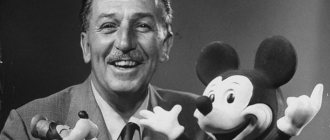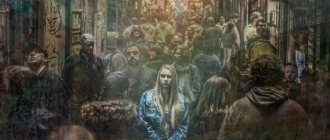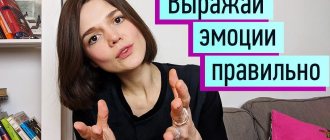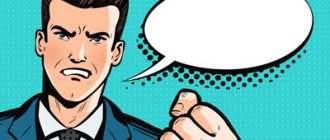You pick up a brush, turn on relaxing music and start painting.
Before you is an empty canvas, which is gradually filled with lines, shapes, colors, and a sense of space. All this is a special non-verbal language that you use to express yourself, your thoughts and feelings. So, when you draw, dance, listen or write music, look at some work of art, you are communicating with the world around you and with yourself. Just do it non-verbally. At this moment, active work occurs in your brain. It involves both the new cortex (neocortex) and the ancient cortex (paleocortex). Different areas of the brain actively communicate with each other, due to which the brain seems to stimulate itself. It allows you to relax, express what you normally cannot express in words, and achieve a state of flow.
The described idea of non-verbal communication is the basis of art therapy.
Any art therapy practice is an attempt to address that part of yourself that cannot be expressed in words. Language is an evolutionarily later formation than images, feelings and emotions.
Remember cave paintings? It’s not called painting for nothing: ancient people communicated and stored information through drawing. Because language is a later development, the areas of the brain associated with speech also developed much later than those that help encode information and feelings through drawing. These “ancient” areas of the brain are still active today, allowing us to store nonverbal aspects of information. Unfortunately, these aspects are not always useful for us.
The concept of art therapy and the history of its origin
The name of the method speaks for itself: this is a creative treatment, and it does not involve any pills, injections or massage. All you need is a sheet of paper, paint or pencil, sand or plasticine, photographs or pictures - in a word, everything that will help you create!
Figuratively speaking, art therapy is a kind of bridge between the consciousness and subconscious of a person, between the mind and feelings, requiring the participation of the soul and providing it with the opportunity to immerse itself in beauty.
The concept of the art approach was first used in 1938 by the artist Adrian Hill, who was undergoing treatment at that time in a tuberculosis sanatorium. Constantly drawing during the rehabilitation process, he noticed how his psychological mood and overall health improved. Doctors liked Hill’s method so much that the following year the artist was invited as a specialist to work with other patients.
Today, the art approach is used with excellent results by psychologists, psychotherapists and teachers to solve many problems, ranging from self-expression and unleashing creative potential to adaptation in society for adults and children with disabilities.
Art therapy can be:
- active (a person draws, sculpts, writes music or poetry);
- passive (a person uses the creations of other people - looks at drawings, reads fairy tales, listens to songs, etc.);
- mixed (using someone else's work to create your own creation).
The most significant advantage of this approach is the simple fact that thanks to creativity we experience exclusively sincere emotions - delight, love, joy, fear, annoyance, bitterness. And all these feelings, even negative ones, with one hundred percent probability will not cause mental trauma in us. When a person sculpts little animals from plasticine, looks at photographs of sunsets and sunrises, composes words to a song or draws flowers, he is not just creating, he is learning to look at the world from the perspective of an observer in order to understand himself, his thoughts, desires and actions. It turns out that creativity gives a person a real opportunity to identify his true purpose, solve internal problems and answer the most important question: “What can I do for this world?”
Fortune telling by book
Have you heard of such entertainment? But this is also an art therapeutic practice. Take any book from the shelf. Ask a question. Now name the page and line number at random, open the book and read the indicated line. This is the answer and often surprisingly accurate.
Metaphorical maps, which some psychologists use in their work, work on the same principle. A person asks a question, draws a card and - bingo! - “sees” the answer.
This is because deep down he already knows how to answer this question, but has not yet realized it.
Here is a real example: a young girl Katya tells fortunes on a volume of Blok. “What’s stopping me from finding love?” she asks. And reads:
Everything was abandoned, forgotten everywhere,
There is no need to suffer and wait,
All that's left is a pile of ashes
Watch with dull eyes...
Katya slams the book shut with tears: “This is about Andrey!” It turns out that she has not yet experienced the breakup with her former lover and, although six months have passed, she still feels that she is bound by that relationship. The answer is precise, but Katya herself deciphered it, since deep down she already knew the reason.
It is important to understand: “real” answers are received only by those who sincerely and carefully formulate the question, that is, work to focus their problem.
If the question is asked correctly, then a random phrase from the book “pulls out” the desired answer from the realm of the unconscious.
How to ask the right question
Formulate it as precisely as possible. For example, the question “What should I do?” - is very vague and you most likely won’t be able to calculate the answer. Here's how to phrase the question:
- The question should be open - that is, such that it can be answered in detail, and not “yes” or “no”.
- The question should be about you and addressed to you. You already know that the book extracts answers from your own experience, so asking questions about other people doesn’t work. That is, not “why did he...?”, but “why me...?”
- Questions about exact dates and deadlines are unlikely to work. If it is important for you to check whether the deadline you have set is suitable for you, then ask about it. That is, not “when will I buy an apartment?”, but “what is stopping me from earning money for an apartment?”
- If you are faced with a choice and want to make a choice, then divide it into two parts and ask two questions. For example: not “Which job should I choose?”, but “What will I get if I stay at job 1?” and “What will I gain if I switch to job 2?”
How to find out everything you need by asking the right questions
590 rub.0 rub.
Frank Sesno
0 pcs.
How to find out everything you need by asking the right questions
- Hardcover 590 rub.
Main goals of the art approach
With the help of art therapy, the following goals are achieved:
- psychological problems are solved;
- emotions associated with experiences are expressed;
- new forms of interaction between the individual and society are identified;
- increased flexibility of thinking and adaptation to change;
- the individuality and value of a person is confirmed;
- hidden layers of the subconscious rise, working with which you can achieve global positive changes;
- positive thinking is formed;
- creative abilities develop;
- new talents are discovered;
- the perception of life in general changes.
Art therapist training
An art therapist must have a higher education:
- “Psychology” (code: 37.03.01);
- “Psychological and pedagogical education” (code: 44.03.02).
A profession can be chosen by specialists who have a diploma from a creative university in areas related to music, sculpture, literary creativity, and drawing. Additionally, you need to take professional retraining courses to learn more about psychology and art therapy.
Courses
IPPSS
Specialty “Art therapist” for 1 year and 3 months under the professional retraining program. New skills and directions - according to advanced training programs for beginners and experienced specialists. Distance learning at IPPSS is:
- Practice in each discipline.
- Feedback from expert teachers.
- Lifetime access to program materials.
- Official diploma or certificate.
- Installment plan 0%, discounts and tax deduction.
IPO
Russian Institute of Vocational Education, NANO "IPO" - is recruiting students to receive specialties: "Art therapist" under a distance program of professional retraining and advanced training from 9,900 rubles. Studying at the IPO is a convenient and quick way to receive distance education. 2000+ training courses. 15,000+ graduates from 200+ cities. Short deadlines for completing documents and external training, interest-free installments from the institute and individual discounts. Contact us!
Universities
Nizhny Novgorod State University named after. N.I. Lobachevsky
Psychology (Faculty of Social Sciences UNN)
Krasnoyarsk State Pedagogical University named after. V.P. Astafieva
Psychological and pedagogical education (Institute of Psychological and Pedagogical Education of the KSPU named after V.P. Astafiev)
Chechen State University
Psychological and pedagogical education (Philological Faculty of ChSU)
Novosibirsk State Pedagogical University
Psychological and pedagogical education (Institute of Childhood NSPU)
Orenburg State Pedagogical University
Psychological and pedagogical education (Orenburg State Pedagogical University)
Who will this method help?
Hundreds of patients who want to change themselves come to art therapists for help. The huge range of tasks that art therapy successfully copes with, the uniqueness of the methodology and the absence of any contraindications encourage psychologists and simply interested people to master the course of Art Therapy, study this method and include it in their practice and life.
The unconditional originality of the method lies in the fact that it is suitable for all people, regardless of their gender and age, and almost without exception gives a pronounced positive effect.
For adults, art therapy helps to reconsider problematic issues, develop new behavior, develop creative thinking and talents, and for children - to reveal creative potential, form the nervous system and psyche, establish contact with peers and maintain an optimal level of intelligence in accordance with age standards. When working with children with special needs, the art approach helps solve problems with vision and motor skills. The atmosphere of the classes itself – playful and friendly – also has a beneficial effect on the general psychological state.
Note that the means of non-verbal communication used in the art approach are very important for adults and children who have difficulty communicating and/or expressing their thoughts.
Art therapy should be addressed to:
- to cope with psychological trauma, loss, post-traumatic disorder;
- in a crisis or conflict situation;
- for the development of personality integrity;
- to get rid of worries and fears;
- if you want to maintain strength in the face of life’s troubles;
- to get rid of stressful experiences;
- to improve relationships with loved ones;
- if desired, better understand your inner world;
- to learn to enjoy life and express your feelings;
- to increase self-esteem.
Features of the profession
An art therapist is an experienced mentor and psychologist who subtly feels the client and helps him overcome stress, depression, apathy, uncertainty, and other problems. Art therapists are classified according to their area of activity. Art therapy was initially implemented through drawings; today specialists use different techniques. Photos, dolls, sand, clay, literary works and much more are used to influence the psycho-emotional state. The responsibilities of an art therapist include the following:
- patient counseling;
- assessment of the current psycho-emotional state;
- choosing the appropriate type of art therapy or combining techniques;
- conducting sessions that can be either group or individual;
- assessment of achieved results, changing the treatment regimen if necessary.
Art therapy is a gentle method of influence, so specialists interact with children, adults, pensioners and other categories of patients. They can work in rehabilitation, medical and other centers, as well as conduct private sessions at home or in their own studio. Art therapy is a long process that can last for months or years, which guarantees the specialist a certain amount of stability.
Types of art therapy
Since its founding, art therapy has included many areas, and today their number continues to increase, as the art approach is constantly enriched and supplemented with new types. Let's consider the most popular of them, which have won recognition from both psychologists and their clients.
Music therapy
It is no secret that music is an effective and easily accessible psychotherapeutic method and is used for relaxation and/or correction of a person’s physical and mental state. The session takes place in a sitting or lying position and is indicated for anxiety, fear, somatic ailments, as well as in preparation for more serious treatment.
Phototherapy
This type of therapy involves working with ready-made images (making collages, looking at and expressing one’s associations) or the patient creating his own photographs. Phototherapy is used to identify and solve psychological problems, helps people who have difficulty communicating, who are in difficult life situations, as well as to stimulate imagination, creativity and meaning-making potential.
Collaging
Cutting out figures (images, materials, photos) to assemble a whole composition - a collage - will help diagnose a psychological state, localize problem situations, get rid of stress, and better understand your feelings.
Sand therapy
During the treatment process, ordinary sand is used, from which mandalas, images or plot compositions are created. This method is a unique opportunity to explore the world around us, communicate with it and with ourselves, relieve internal tension, and embody unconscious thoughts on a symbolic level.
Bibliotherapy
Involves reading or working with textual information in order to normalize the mental state and influence thinking and behavior.
Metaphorical cards (MAC)
Metaphorical associative maps are a recognized effective tool in the work of a good psychologist. MACs are a set of pictures depicting people, natural phenomena, animals, emotions, events, the correct use of which in the process of psychological conversations helps not only in the development of creative abilities, but also in decision-making, in searching for new ideas and in establishing communication.
Play therapy
With the help of games and toys, you can solve both personal and professional difficulties. The method is used by psychologists to identify children's fears and relieve stress. It is clear that children open up and show feelings in play much more easily and willingly than in everyday life. An adult, playing or touching toys, listens to his feelings and can remember what has bothered him for many years and served as a source of problems.
Isotherapy
Fine art therapy primarily involves treatment through drawing. In the process of creating a drawing, paints, crayons, pastels, markers, felt-tip pens are used - in a word, any tools and materials are suitable. Isotherapy will provide an opportunity to see internal conflicts and one’s own experiences, increase self-esteem and self-confidence, and help in creative development and in the process of social adaptation. Recommended for corrective work in neurotic conditions, depression, phobias and somatic disorders.
Fairy tale therapy
An effective way to convey to the patient (adult or child) the necessary moral and ethical standards, fundamentals of behavior, rules and experience of generations. During the lesson, a fairy tale, epic, parable is read or told, and then discussed and analyzed. The method will help you build and shape a new life scenario and find solutions to problems.
Cinema therapy
A similar technique for rethinking important values by watching a movie and then discussing the plot with a therapist.
Tissue therapy
Creating compositions and products from different fragments of fabrics (for example, silk, brocade, satin, linen, cotton, leather) helps to change the way you look at your problems and your condition, and teaches you to take responsibility for your decisions and actions.
What is the brain made of?
Let's take a look into the brain of a person who is engaged in creativity. Let's take a simplified look at the main features of the brain. First and most important: such a person has both hemispheres activated! There is a myth that the left hemisphere is responsible for analytical abilities, and the right for creative abilities. However, this is not quite the case.
With damage to the left hemisphere of the brain, creative abilities are indeed preserved, but a person’s language skills suffer. At the same time, a number of studies show that in order to carry out any creative act, the entire brain is used.
In an experiment with savant artists, approximately equal activation of both hemispheres was noted, except that the one responsible for the dominant hand was slightly dominant. If you draw with your right hand, then your left hemisphere will be dominant. We can only state for sure that the left hemisphere processes predominantly verbal and sequential information, and the right hemisphere processes visual images. However, in people with PTSD, the verbal areas of the left hemisphere remain inactive.
Remember where we started? You painted a picture while listening to beautiful relaxing music. To carry out this action, the brain connects the visual cortex (you must see what you are drawing, where you paint, the colors you are using, how you stand in relation to the canvas), the auditory cortex (the influence of relaxing music, the sounds of the brush), the somatosensory cortex (it allows you to feel the brush in hand, feel its position, control touching the paper), motor cortex (your brain forms a program of very precise small movements, which is then transmitted to the necessary muscles of the body). And this is only a small part, because at the same time, ancient brain structures are activated that help you breathe, support your metabolism, and turn on the hidden emotional aspects of your memory.
Areas of the brain responsible for sensory and executive functions.
Each hemisphere of the neocortex (neocortex) can be divided into two functional areas: sensory and executive. Information from our senses is processed in the posterior and lateral regions of the brain (temporal, occipital and parietal lobes). Once the brain has processed information in the sensory areas in several stages, it transmits it to the anterior areas. The frontal regions, in turn, form programs for responding to this information in the form of behavior and movements.
The neocortex covers the ancient structures of the brain like a very wrinkled pillowcase. You've probably heard about the hippocampus (the center of our memory, which creates “memory maps”) and the amygdala (“the center of emotions”). Another important component of the ancient cortex is the thalamus. It is a kind of relay of our brain. It receives stimuli from the senses, and it directs them to the desired area of the brain for processing. Communication between the sensory parts of the brain and the executive parts can occur either directly or through the thalamus.
Emotions and feelings are a slightly different type of information than ordinary sights, sounds and touches. In fact, no one can now say exactly how emotions appear and are recognized. But we know that one of the areas of the brain most involved in the formation of emotions is the amygdala. Emotional information is processed in it, after which it enters the executive, frontal cortex through the thalamus. As a rule, the left amygdala is responsible for processing conscious emotional information, the right - unconscious.
When a traumatic event enters the brain, it passes through different senses that simultaneously process signals about the event. The information then travels to the frontal cortex. Thus, a traumatic event turns out to be the sum of conscious and unconscious information. Moreover, most of this information is remembered in non-verbal form. The hippocampus, which is responsible for the formation of the memory map, actively interacts with the amygdala, which, as it were, colors the memory in the desired emotional light.
Is creativity worth healing?
As we can see, art therapy sessions can include different creative directions. If you contact a psychologist, he will help you navigate the choice of the method that is best suited for you.
You need to understand that art therapy is absolutely harmless and connects to a person’s subconscious, influencing the psyche gently and carefully. The patient not only receives genuine pleasure from creativity, but also is distracted from everyday problems, adapts more easily to social conditions, and becomes more emotionally protected and stress-resistant.
Art therapy shows excellent results in solving many psychological problems - age-related, personal, crisis.
All these facts suggest that it certainly makes sense to try such treatment. Many patients who have undergone this therapy claim that creativity opened up a real path to their soul, that regular exercises gave them an understanding of their true desires, changed their view of the world and themselves, and gave them the opportunity to feel like a creator who independently writes the script of their life.
Expressing emotions through text
If you at least sometimes write posts on Instagram or Facebook, then this art therapeutic practice is familiar to you. It is in your power to make it more conscious.
Creating texts is the same creative activity as drawing, which means that it “pulls out” unconscious mental processes in the same way. If the resistance is weak, then the authors who have found their emotionally charged topic feel the excitement and joy of writing the text. And they unload stuck emotions through writing practice, at the same time showing their reasons. This is how personal texts published on social networks work. For example, when describing his impressions of a recent accident, talking about the betrayal of a friend or a big win, a person not only shares this with other people, but also relieves tension from this topic, gets used to it, and adapts to his reality.
Often what you can read between the lines in a text is not what the author intended, and the original thought is not readable at all. This is how resistance manifests itself.
In order not to let the unconscious onto paper, authors resort to a number of disguise techniques: an excess of metaphors, comparisons and introductory words that overload the material, jumping from topic to topic, abundant use of indefinite pronouns (“something”, “someone”) ", "some"), which avoid direct reference to a person, event or feeling. Often resistance even leads to writer's block - a state when you really want to write a text, but you cannot squeeze out a single line.
The book Write Don't Write details a technique that helps you identify your emotionally charged topic and relieve tension by expressing your feeling through text.
Write - don't write: A psychological guide for authors on working with text and themselves
Evgenia Peltek
How to relieve stress through writing
- First you need to choose a topic for a short text. This can be either an important topic that has been bothering you for a long time, or any random story. You can write about a cup that is on the table, shoelaces, a lost love - you are free to choose what you want.
- This is a game practice, so in order to perform this exercise, you need to enter a special role. Imagine suddenly losing all shame.
- What would you write right now if you had no shame or conscience?
- If you can’t get into the role, come from the outside: what would another person write if he had no shame or conscience?
- Now set a timer for 10 minutes and write everything that comes to mind.
Having received such a task, most authors gain unprecedented ease of pen. Those who just couldn’t get a single line out are enthusiastically scribbling in their notebooks. As a result, the text reveals the author’s current state, his true mood and suppressed emotions. Such texts often contain accusations, requests, fear, and obscene language.
Such text is rarely suitable for publication in its original form and needs careful editing, and may not be intended for prying eyes at all. However, it helps to relieve creative pressure, identify an important topic that the author is interested in writing about, and unload “stuck” emotions.
Art techniques in individual and group work
Art techniques in individual and group work
1. The essence of the consultation process in modern art therapy approaches
Art therapy is a method of treatment through artistic creativity [2].
Art therapy is one of the softest and at the same time profound methods in the arsenal of psychologists and psychotherapists. Art therapy has no restrictions or contraindications, is always resourceful and is used in almost all areas of psychotherapy, pedagogy, social work and business.
The art therapy method can be considered one of the most ancient and natural forms of correction of emotional states, which many people use on their own - to relieve accumulated mental stress, calm down, and concentrate. Any person is able to express himself, his feelings and his state with melody, sound, movement, drawing.
The word “art therapy” was first used in the 1940s. in English-speaking countries by such authors as M. Naumburg and A. Hill to designate those forms of clinical practice in which psychological “accompaniment” of clients with emotional, mental and physical disorders was carried out during their visual arts activities for the purpose of their treatment and rehabilitation [ 1].
Most domestic authors using the concept of art therapy follow the definition accepted in the international literature and consider it as one of the forms of psychotherapeutic practice based on the use by patients of visual, plastic means of self-expression in the context of psychotherapeutic relationships (Burno, 1989; Karavasarsky, 2000; Kopytin, 1999, 2001, 2002a; Nikolskaya, 2005; Khaikin, 1992) [3].
The essence of the advisory process in art therapy comes down to the fact that art therapists create a safe environment for the client, which can be an office or studio, and provide him with various visual materials - paints, clay, etc., being next to him in the process his visual work. Clients can use the materials provided to them as they wish, seeking to express their thoughts and feelings in visual work in the presence of an art therapist. The art therapist encourages the client to interact with visual materials, making the art therapeutic process a form of dialogue.
Art therapy, like any other type of psychotherapy, is aimed at awareness of unconscious mental material - this is facilitated by the wealth of artistic symbols and metaphors. Art therapists must deeply understand the peculiarities of the process of visual creativity, have professional skills in non-verbal, symbolic communication and strive to create for the patient a working environment in which he could feel sufficiently protected to express strong feelings. Aesthetic standards in the context of art therapy are of little importance.
According to the head of the art therapeutic education program, professor at the University of London and honorary president of the British Association of Art Therapists D. Waller, art therapy is based on the idea that the creation and perception of visual images is an important aspect of human cognitive activity; that visual creativity in the presence of a specialist allows the client to actualize and express both early and relevant in the context of “here-and-now” conscious and unconscious feelings and needs, including those whose expression with words is too difficult; and, finally, that the visual image is a means of communication between the psychotherapist and the client [5].
Art therapists state that in the process of art therapy, a depressed person recreates in creativity what seems destroyed to her, a schizoid person seeks hidden meaning in objects, and not in relationships with people, and an obsessive person defends himself in creativity from obsessions.
There are two main parts in the structure of an art therapy session:
- non-verbal, creative, unstructured part. The main means of self-expression is visual activity (drawing, painting). A variety of mechanisms of non-verbal self-expression and visual communication are used (70% of the session).
- verbal, apperceptive and formally more structured part. It involves verbal discussion, as well as interpretation of drawn objects and emerging associations. The mechanisms of verbal self-expression and visual communication are used (30% of the session).
Areas of analysis, what matters when analyzing creativity:
- how a person expresses himself;
- what it expresses;
- in what form;
— how it affects a person or group [7].
One of the important advantages of art therapy is that art allows you to reconstruct a traumatic conflict situation in a hidden symbolic form and find its resolution due to the fact that creativity is one of the transformative forces for overcoming fear and anxiety that arise in connection with internal conflict. The art therapy method allows each person to create their life in the literal sense of the word: sculpt happiness, draw sadness, write about conflicts.
The art therapy process itself is enjoyable and teaches clients to express their experiences as spontaneously and freely as possible. Therefore, art therapy is successfully used when working with children, adults, in individual and family therapy, in solving a wide range of interpersonal and intrapersonal problems, as well as issues related to physical health.
The effectiveness of classes directly depends on the professionalism of the art therapist. He must not only master the techniques and techniques of the arts with which he works, but also have a medical, psychotherapeutic or psychological education. An artist or dancer who does not have such knowledge cannot be an art therapist, since he is not familiar with the causes and mechanism of development of anxiety states. The creative individuality of the psychotherapist, his erudition, flexibility of thinking, and mobility are also of considerable importance for the result of art therapy.
Thus, art therapy is a set of psychological methods of influence used in the context of the client’s visual activity and psychotherapeutic relationships and used for the purpose of treatment, psychocorrection, psychoprophylaxis, rehabilitation and training of persons with various physical disabilities, emotional and mental disorders, as well as representatives of groups risk [5].
2. Comparative analysis of the main methods and techniques of the consultation process in art therapy
For art therapeutic work, it is necessary to have a wide selection of different visual materials. Along with paints, pencils, wax crayons or pastels, magazines, colored paper, foil, textiles, clay, plasticine, special dough for modeling, sand with miniature figures for “sandbox play,” wood and other materials are also often used. Drawing paper should be of different formats and shades. It is also necessary to have brushes of different sizes, sponges for painting large spaces, scissors, threads, different types of glues, tape, etc.
It should be taken into account that the choice of a particular material may be associated with the characteristics of the client’s condition and personality, as well as with the dynamics of the art therapeutic process. The client should be given the opportunity to choose one or another material and means for visual work. As a rule, when starting work, clients prefer to use pencils, wax crayons or felt-tip pens. These working tools allow them to have good control over the drawing process, which meets the need to avoid confrontation with their feelings in the initial stages of work. The choice of these means may be associated with the need for psychological security.
In subsequent stages of the art therapy process, clients gradually master other materials, including paint, which provide them with greater opportunities to express a variety of experiences and work with their own feelings. In addition, paints, mixing and creating a variety of shades, make the visual process less predictable, involving the manifestation of subtle nuances of emotional states and various aspects of the client’s experience. When defensive tendencies are overcome, paints are able to evoke a strong emotional response, a feeling of joy of discovery, and stimulate the imagination [2].
Clay, dough, sand and other plastic materials have significant potential for expressing strong feelings, including feelings of anger. Working with them involves a greater degree of physical involvement and muscle activity, which makes it more “energy-intensive”, affecting psychophysiological processes. Therefore, when working with them, a positive effect can often occur in psychosomatic disorders and somatovegetative manifestations of neurotic conditions.
The use of collage techniques often helps patients overcome shyness associated with a lack of “artistic talent” and skills. In addition, using ready-made objects and images to create a new composition from them gives patients a sense of security, since they do not identify their experiences with these objects and images as much as, for example, when drawing. This provides them with the necessary degree of distance from too strong or delicate feelings and the necessary degree of safety during visual work.
Among modern means and trends in art therapy, a relatively new promising direction is becoming more and more prominent - origami - the construction of various paper figures by folding a square without cutting and gluing.
Numerous studies indicate that origami classes improve the quality of life of patients, reduce the level of anxiety, help to forget pain and grief, increase self-esteem, promote friendship, mutual assistance in a team, and help establish contact between the doctor and the patient.
While practicing origami, the patient becomes a participant in an exciting action - transforming a paper square into an original figurine - a flower, a box, a butterfly, a dinosaur. This process resembles a trick, a small performance, which always causes joyful surprise. By sequentially simple folding of paper along geometric lines, we obtain a model that amazes with its beauty and changes the emotional state of the patient for the better. There is a desire to show someone this miracle, to add something else. The feeling of isolation disappears, communication is improved, including between the doctor and the patient, which is especially important if the patient is a child [1].
The sandplay method (literally - sand game) is one of the unusual techniques of art therapy, during which a child (and sometimes an adult) builds his own world in miniature from sand and small figures, expressing in sand what spontaneously arises during the lesson . In the process of work, the child can mix sand with water if he needs to form hills, mountains, or create various wet landscapes, for example, a swamp. In addition, the work uses many miniature figures: people, animals, trees, buildings, cars, bridges, religious symbols, and much more. Such a variety of figures and materials is necessary in order to give the child an incentive to create his own world.
This method can be used in working with children from three years old (and also as one of the stages in working with teenagers and adults), with the following range of problems:
— various forms of behavioral disorders
— difficulties in relationships with adults (parents, educators, teachers) and peers
- psychosomatic diseases
- increased anxiety, fears
— difficulties associated with changes in family (divorce, appearance of a younger child, etc.) and social situations (kindergarten, school)
— neuroses [4].
Many art therapists use effects work. The goal of this work is always in-depth self-knowledge, mastering new types of activities and ways of behavior in an unknown situation, updating strong experiences, feelings, fantasies and fears. In this direction there is no clear thematic conditionality. The techniques are applicable at the working stage of the group in the conditions of an established atmosphere of trust and acceptance. These techniques relate to techniques for working with the deep unconscious and are used in the context of analytical and existential art therapy. Among the techniques in this direction are the following: creating a three-dimensional composition or sculpture from paper, drawing on crumpled or wet paper, experimenting with color, using contrasting colors and styles, free scribbles, monotypes (creating a drawing on glass and making an impression on paper), prints various objects, paint blowing techniques, ink spots and butterflies, mixing paints, drawing with charcoal crayons, etc.[2]
Art therapy uses individual and group forms of work. Working in a group gives a particularly striking effect. For example, it is proposed to create individual works in a group, as well as create a common work. Each participant brings something of their own to this work. Clients take many works made from paper, compositions made from natural materials and other things home with them, show them to their relatives and friends, and strive to teach them what they themselves have learned.
When working in groups with children, art therapists use special techniques of verbal and nonverbal feedback, including interpretations adapted to the characteristics of the child’s psyche. For example, while working with a group, the facilitator can comment on the actions and visual production of class participants. Such comments may include not only “mirroring”, but also the use of simple explanations of why the child is drawing or doing this, or what experiences he may be experiencing. The psychotherapist must, however, use this technique with great caution so as not to impose his own feelings on the children.
Since abstract thinking is poorly developed in children, the art therapist comments on their actions and drawings as simply and specifically as possible. Taking into account children's insufficient ability for self-reflection, the art therapist avoids psychological definitions. When using interpretation, the art therapist may also use metaphors.
The value of interpretations adapted to the characteristics of children's perception lies in the fact that they lead to the development in children of the ability to understand and verbally express their feelings and needs, awareness of the motives of their actions and their impact on others. Interpretations also have an important socializing function, allowing the child to develop mechanisms of control over experiences and psychological defense mechanisms.
The methods of verbal and non-verbal feedback used by the art therapist in the course of his work with the child may include active observation, reformulation of his statements, selective questions, statements of feelings reflected in the drawing, actions and facial expressions, communication by the art therapist about his feelings and associations with the drawing, limiting influences and other techniques [4; 5; 6].
When applied to adolescents, group art therapy in many cases has certain advantages over individual therapy. It gives teenagers the opportunity to control the extent to which they trust others with their thoughts and experiences and, because of this, provides them with greater psychological security than in individual art therapy. This is of particular importance when working with adolescents who are experiencing symptoms of post-traumatic stress disorder. In addition, unlike individual psychotherapy and art therapy, working in an art therapy group gives adolescents a sense of greater independence and, thus, satisfies their need for independence and protection of their personal space.
Group art therapy provides adolescents with the opportunity for mutual emotional support during the period of their distance from family and psychological self-determination. When working with adolescents, it serves to overcome feelings of social isolation and stigmatization. Group interaction with peers in the presence of a psychotherapist contributes to the formation of healthier family relationships in adolescents from dysfunctional families [5].
Thus, modern art therapists use many methods when working with clients, including drawing with pencils, paints, crayons, etc., modeling from dough, clay, plasticine, etc., origami, sand play and many other methods . Each method has a large number of techniques that the therapist selects depending on the client’s characteristics. There are two forms of art therapy sessions: individual and group. The art therapist also decides which form to choose for more effective work with the client.
Bibliography
1. Art therapy - new horizons / Ed. A.I. Kopytina. – M.: Kogito-Center, 2006. – 336s.
2. Art therapy: Reader / Under. ed. A. I. Kopytina. – St. Petersburg: Peter, 2001. – 320 p.
3. Valdez Odriozola M. S. Art therapy in working with teenagers: Psychotherapeutic types of artistic activity: Methodological manual. – M.: Vlados, 2007. – 63 p.
4. Kiseleva M.V. Art therapy in working with children: A guide for child psychologists, teachers, doctors and specialists working with children. - St. Petersburg: Rech, 2006. – 160 p.
5. Kopytin A.I., Svistovskaya E.E. Art therapy for children and adolescents. — Cognito Center, 2007.
6. Krol, V.M. Psychology and pedagogy: Proc. manual for technicians universities / V.M. Krol - M.: Higher School, 2001
7. McNiff S. Creativity beyond the usual: expanding the possibilities of psychological research through art // Healing art: a journal of art therapy. – 2002. – Volume 5, No. 2. – P. 8-25.
8. Shevandrin, N.I. Fundamentals of psychological diagnostics: Textbook for university students: In 3 hours / N.I. Shevandrin. – M.: VLADOS, 2003.











